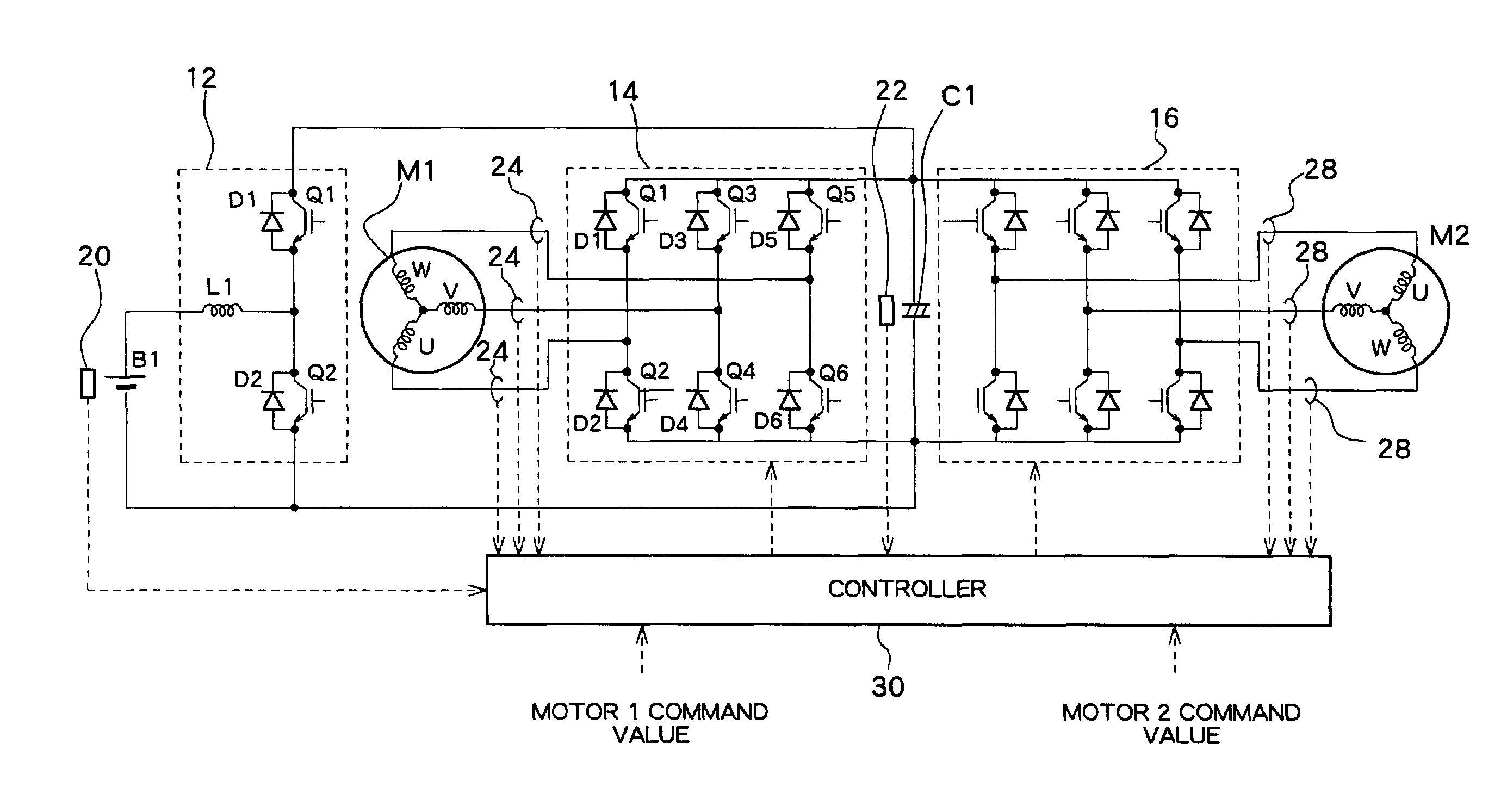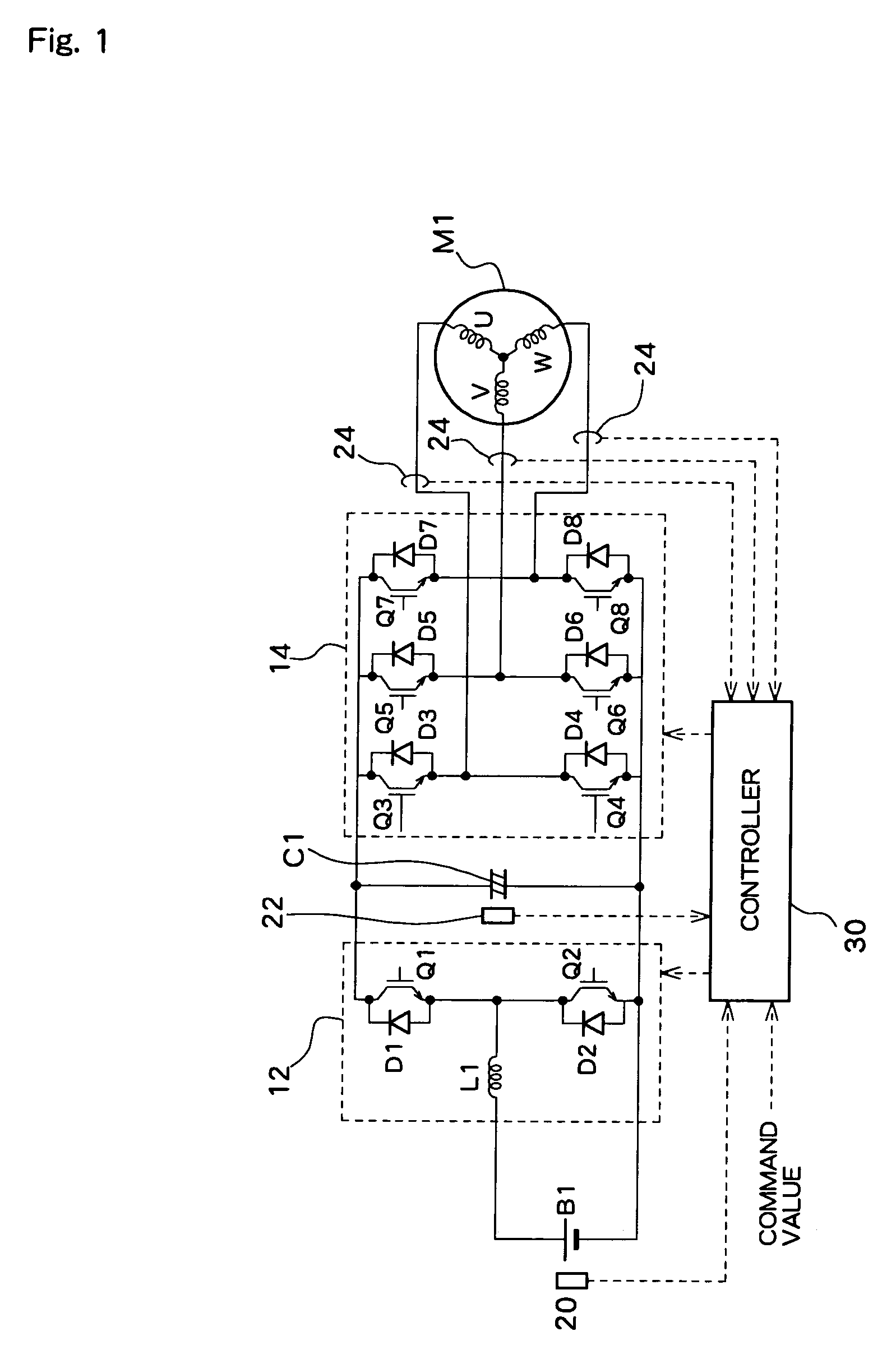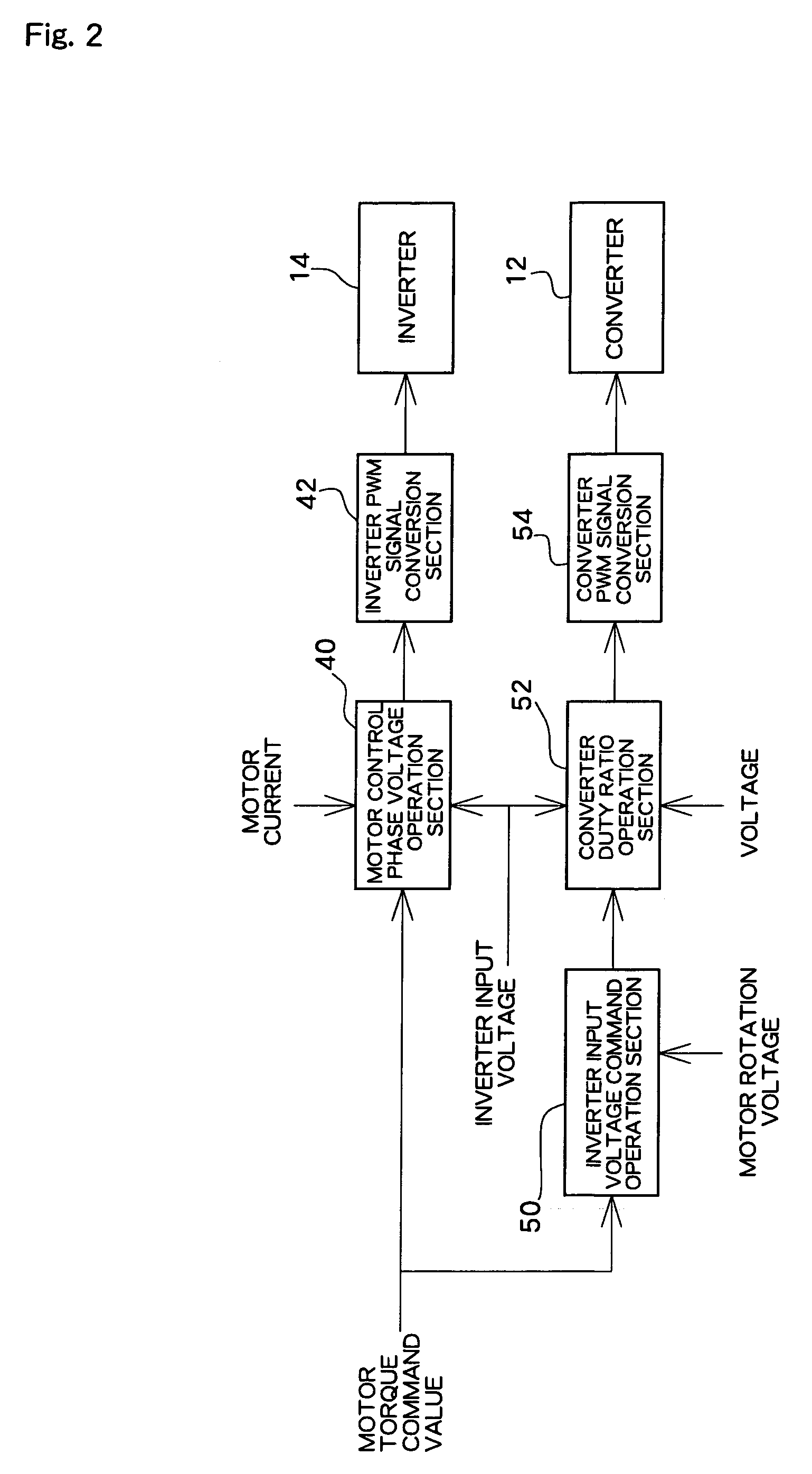Motor drive control apparatus
a technology of motor drive and control apparatus, which is applied in the direction of electric generator control, dynamo-electric converter control, dynamo-electric gear control, etc., can solve the problem of small maximum torque in the high rotational speed rang
- Summary
- Abstract
- Description
- Claims
- Application Information
AI Technical Summary
Benefits of technology
Problems solved by technology
Method used
Image
Examples
Embodiment Construction
[0027]Embodiments of the present invention will now be described below based on the drawings.
[0028]FIG. 1 is a drawing showing the structure of one embodiment, where a battery B1, being a dc power source, is a secondary battery such as a nickel metal hydride (NiMH) or lithium ion battery. One end of a reactor L1 is connected to the positive electrode of the battery B1. The other end of the reactor L1 is connected to an intermediate point of NPN transistors Q1 and Q1 that are connected in series (connection point of the emitter of transistor Q1 and the collector of transistor Q2). The collector of transistor A1 is connected to a power source line while the emitter of transistor Q2 is connected to earth. Diodes D1 and D2 are respectively arranged across the emitter and collector of each of the transistors Q1 and Q2 to allow current to flow from an emitter side to a collector side. A converter 12 is thus constituted by the reactor L1, transistors Q1 and Q1, and the diodes, D1 and D2.
[0...
PUM
 Login to View More
Login to View More Abstract
Description
Claims
Application Information
 Login to View More
Login to View More - R&D
- Intellectual Property
- Life Sciences
- Materials
- Tech Scout
- Unparalleled Data Quality
- Higher Quality Content
- 60% Fewer Hallucinations
Browse by: Latest US Patents, China's latest patents, Technical Efficacy Thesaurus, Application Domain, Technology Topic, Popular Technical Reports.
© 2025 PatSnap. All rights reserved.Legal|Privacy policy|Modern Slavery Act Transparency Statement|Sitemap|About US| Contact US: help@patsnap.com



